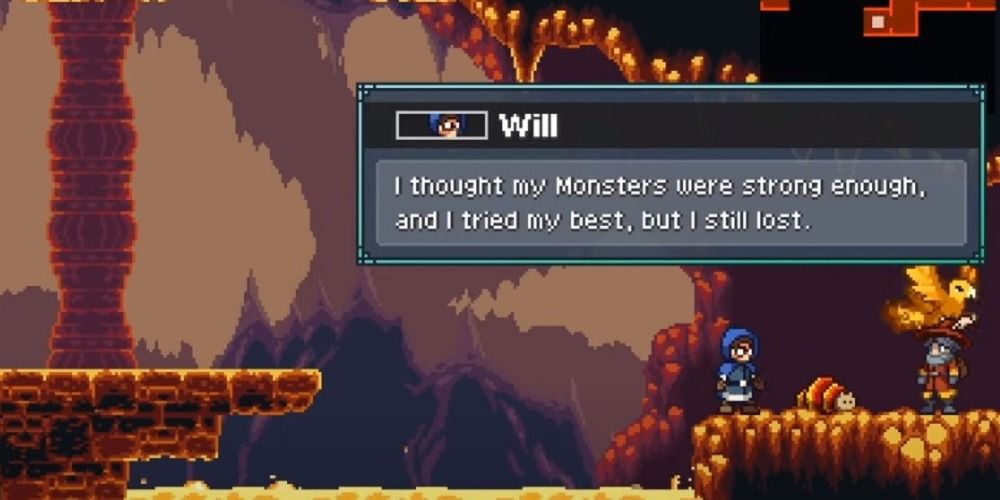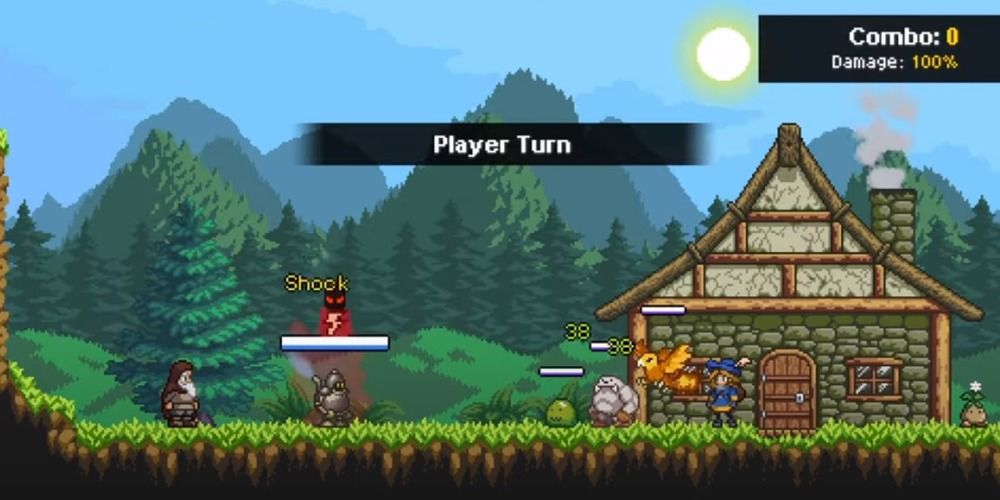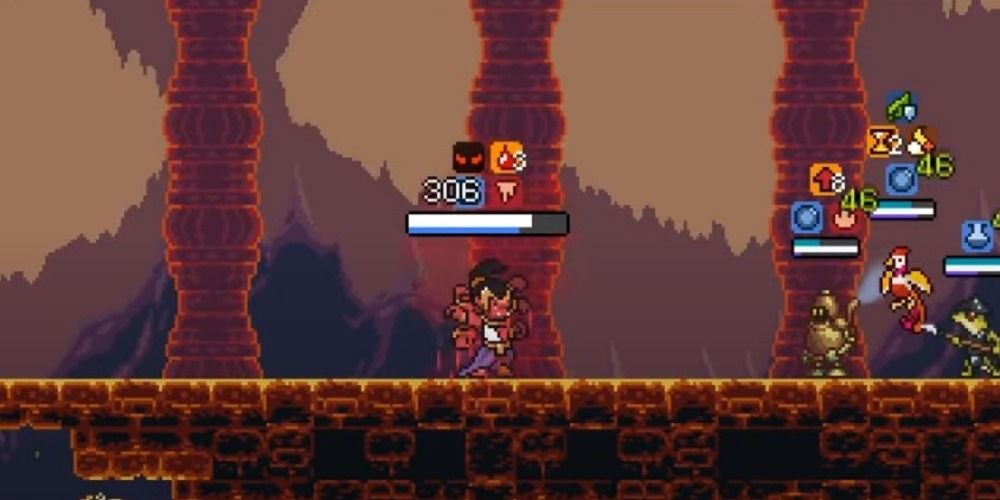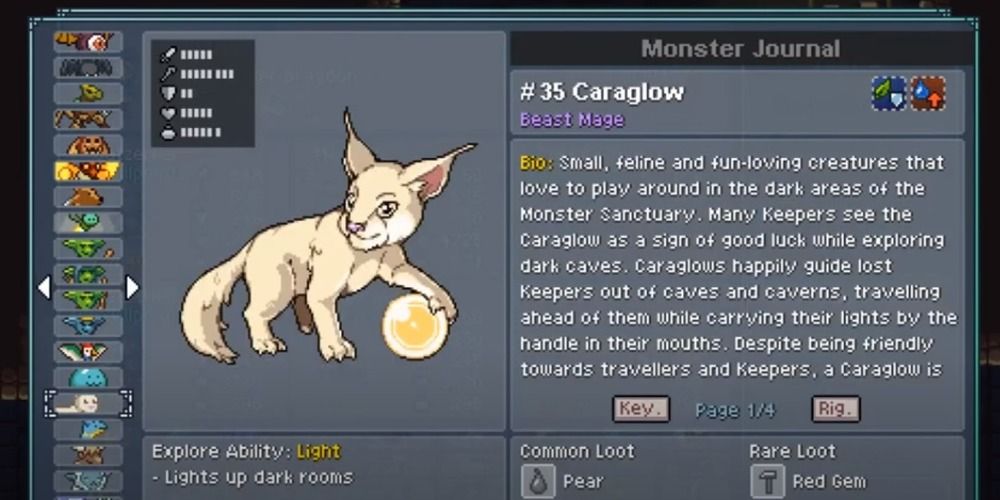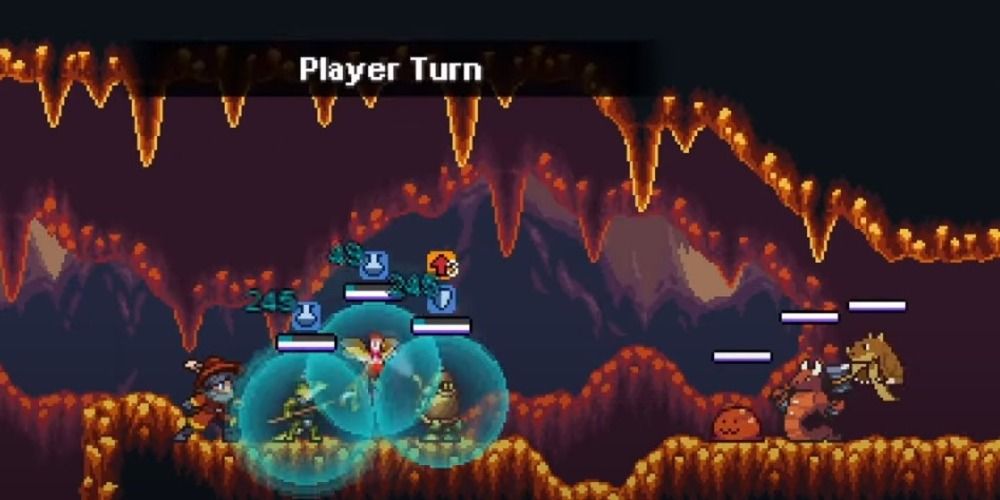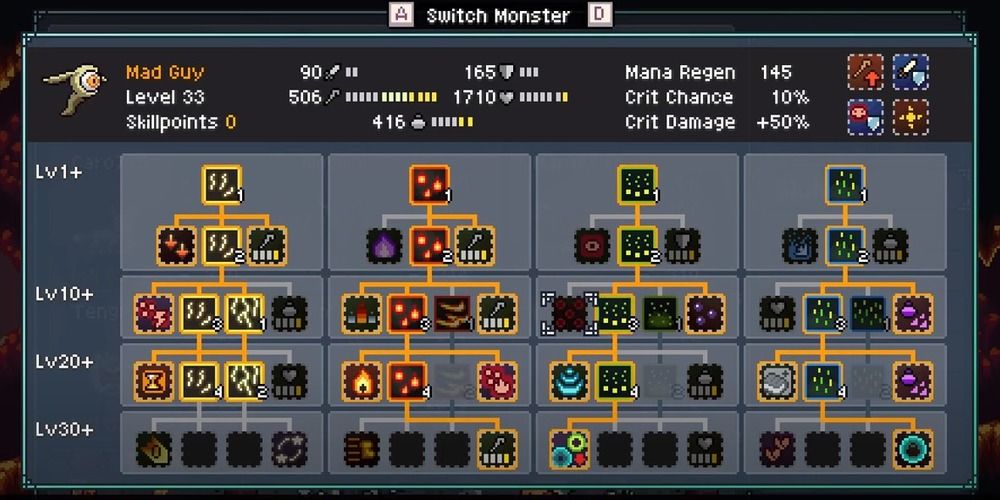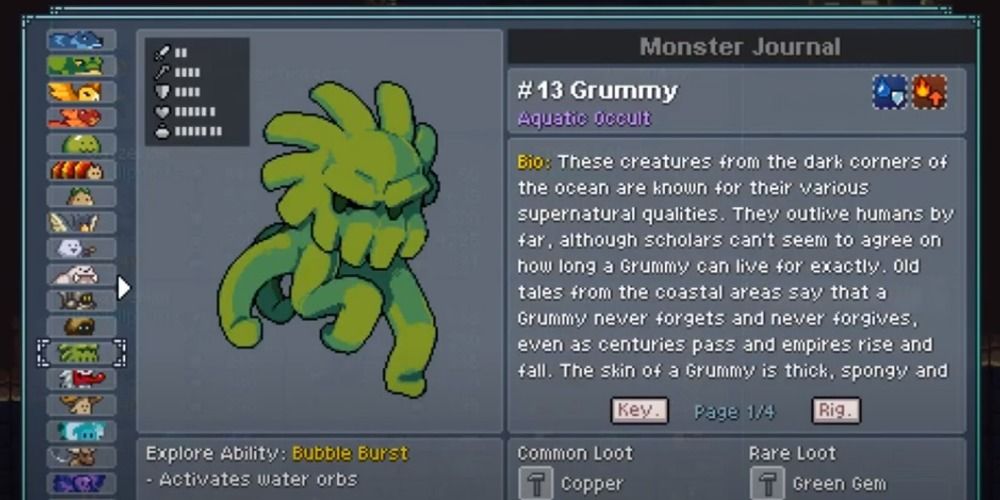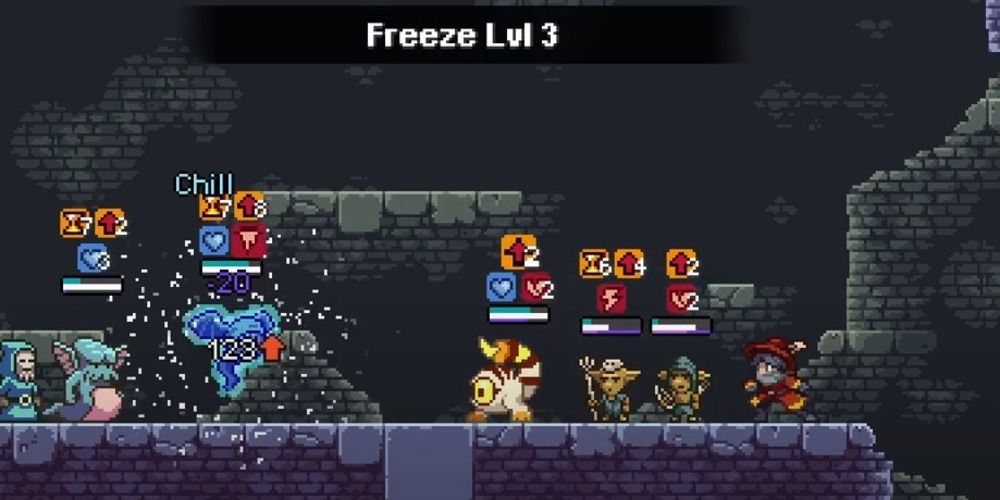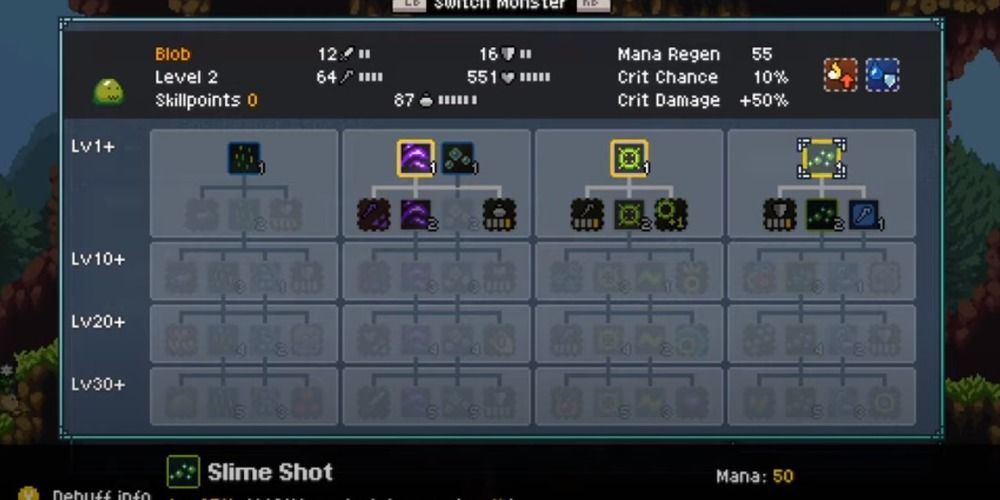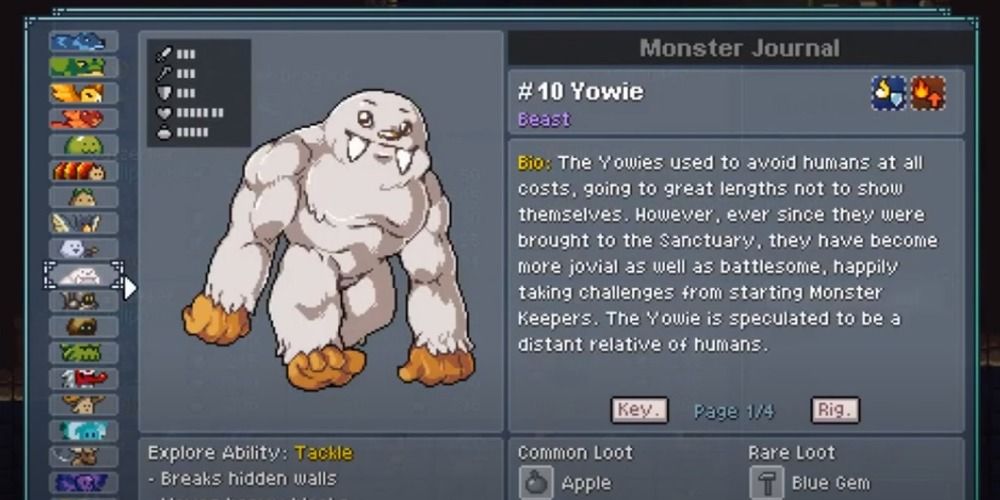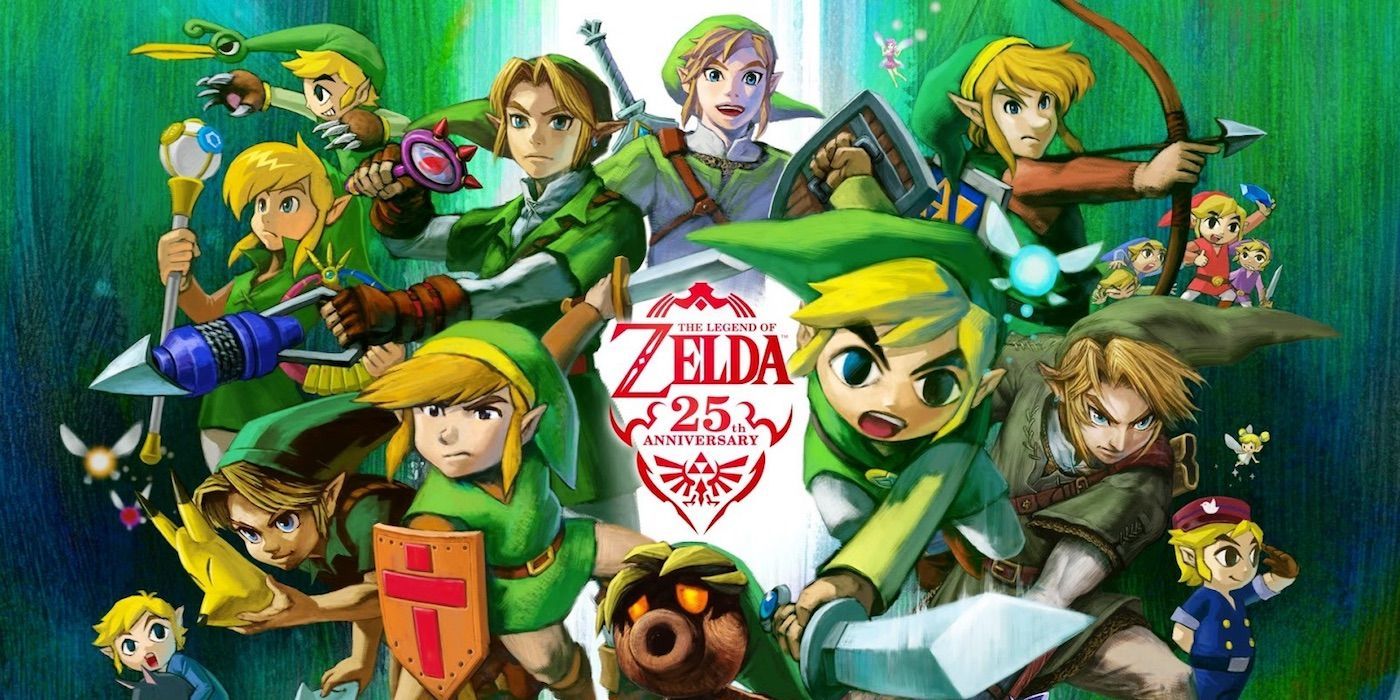Although Monster Sanctuary takes a lot of cues from other monster taming games like Pokemon or Siralim, its battle system is also vastly different and can’t be approached in the same way. For monster taming fans who have come from these titles, they may find the battle system in Monster Sanctuary a little more difficult than they have come to expect from such games.
While Monster Sanctuary does have something of a learning curve to it, largely due to its often punishing combat, it doesn’t take long to get a handle on the intricacies of its battle system as there is virtually no downside to losing in battle to test the waters.
10 Keep An Eye On Your Team’s Weaknesses
There is a lot going on in the status pages of your team’s monsters, but one that should be kept in mind when considering adding new members to your team is the elements they are weak to. While there are many strong monsters that can be found early in the game, there are multiple that are weak to the same element, such as Vaero, Monk, and Catzerker all being weak to Earth damage while resisting Wind damage. Both a monsters weakness and resistance should be taken into account, otherwise more difficult battles may be lost very fast if your entire team is weak to the same element.
9 Have A Diverse Range Of Attacks
Just as you should aim to have a diverse range of weaknesses and resistances, you should also make sure that the main attacking monsters on your team have a wide range of attacking elements. While Brutus is one of the most powerful monsters in the game, it can only learn Neutral attacks, which only a handful of monsters are weak to. In comparison, Manticorb, Monk, and Imori all have access to multiple different attack elements while their respective niches are all fairly different, though both Manticorb and Imori both focus heavily on Critical Damage.
8 Take Advantage Of Critical Hits And Bleeding
Speaking of Critical Damage, it is the one element of combat that no monster in the game resists. While many monsters will resist the element of the attack or, in rare cases, resist debuff chip damage, Bleed is unique in that it isn’t resisted by anything and is a surefire way of ensuring you are dealing extra damage.
Monsters like Catzerker and Imori are fantastic at inflicting Bleed thanks to their high Critical Chance and Damage, though, like most other monsters that focus on Bleed, they also have very bad defenses and can be taken out very fast if they are focused on too heavily.
7 Healers Can Be A Life Saver
In Pokemon, healing is normally left to held items, as wasting a turn to heal an ally isn’t always worth giving up the damage dealt instead. In contrast, healing abilities in Monster Sanctuary are mandatory if you want to survive more difficult battles. Champion battles, in particular, require a healer on your team, as they are able to attack multiple times in a single turn and many are also able to consistently buff themselves to deal more damage than usual.
6 Dedicated Shielders Are Just As Important As Attackers
As well as healing, having a monster that can create shields for your team is very important. This is one thing that does carry over from Pokemon, as moves like Protect or Ally Switch are a necessity in the double battle format so that teammates can be protected. While shielding doesn’t block all damage, it does help keep the frail, damage-dealing monsters alive long enough to take out any monster that may threaten them. Steam Golem and Targoat are particularly good at this, though many monsters will have a way of either giving themselves or a teammate a shield in some way.
5 Removing Buffs
From the mid to late-game, many wild monsters, Champion battles, and Keeper Duels will have the opposing team enhancing their capabilities with buffs, many of which can become problematic very quickly. With this in mind, attacks like Cleansing Flame, which removes buffs after attacking, or the Cleanse passive buff which adds a chance for every attack to remove a buff from the target should be kept in mind when team building.
4 Removing Debuffs
In the same vein as removing buff from opponents, you should also make sure that you have a way of removing debuffs that are put on your own team. Debuffs that deal chip damage can quickly add up, especially if the opposing monster has a way of inflicting multiple different debuffs at once like Grummy or Imori.
This also becomes a problem late-game, when many monsters gain the ability to stack the same debuff over and over again, which can quickly add up if your monsters are suddenly inflicted with multiple stacks of Burn or Poison.
3 Using Damage Over Time Effects
Damage over time debuffs are problematic for your own team, but they are a godsend for them as well. Once your monsters have reached level 30, many of those that are centered around inflicting debuffs will have access to passive buffs that either allow them to be stacked or deal more damage when they activate.
While Poison and Burn in Pokemon is an added bonus rather than the goal the majority of the time, in Monster Sanctuary, you should be aiming to take advantage of these effects whenever possible, as they can often deal more damage than a regular attack if the right passive abilities are combined with them.
2 Take Note Of Passive Stat Buffs When Choosing Equipment
Before equipping your monster with all of the highest damage boosting weapons and Critical Chance boosting accessories, take note of where their strengths in battle lie and what stats they would actually benefit from. Since it is designed almost exclusively for shielding, equipping a Targoat with Critical Chance boosting effects over Defense boosting gear is counterproductive, since its Shield ability’s strength is dictated by its Defense stat. The same can be said for dedicated healers, which often heal based on their base HP or Mana stat, so those should be prioritized over damage boosting equipment.
1 Use Chill Whenever Possible
Of all the debuffs in the game, Chill may be the best of them all by a wide margin. Aside from being able to deal a considerable amount of damage when combined with the Congeal passive ability, Chill’s innate ability to reduce the monster’s mana regeneration makes it one of the best strategies to build a team around.
Many early game monsters, such as Yowie, Frosty, and Specter can all take advantage of this debuff and can help in reaching a five-star ranking in most Champion battles or Keeper Duels, though it will also be nearly useless against most monsters that resist either Water or Wind elemental attacks. Despite this, the Chill debuff itself is still worth inflicting whenever possible.
Next: 10 Best Games Of The Metroidvania Revival
- Lists
- Guides
- Monster Sanctuary
Callum Archer is a freelance writer based in Perth, Western Australia. He is an avid gamer, Nintendo fanboy, and lover of weird sci-fi novels, who also dabbles in manga from time to time, usually dark and twisted work like Uzumaki and Death Note.
Source: Read Full Article
